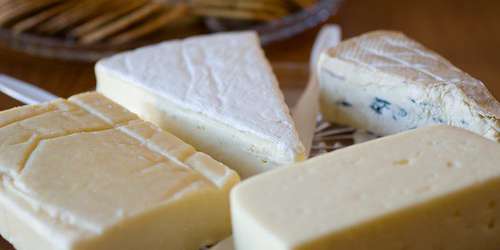
The color of low-fat cheese can have a significant impact on consumer perception, profoundly affecting the success of the product. Image Source: Flickr user Andrew Blight
Over the past several decades, advances in our understanding of nutrition have dramatically transformed the dietary habits of millions of Americans seeking to improve their health, promote longevity, and resolve physical ailments. As the public has grown more health-conscious, the food industry has responded to increased demand for healthier choices by offering a host of alternatives to traditional products. Low-fat cheeses were amongst the first reduced-fat and fat-free products introduced to the mainstream market in the 1990s and, while they initially floundered owing to lack of gustatory appeal, advances in low-fat cheese formulation have created a surge in sales as cheese producers have discovered how to create more palatable products that simulate the sensory experiences of full-fat cheeses.
“In the last decade, cheese makers have been doing a much better job,” says Jed Davis, director of marketing at Cabot Creamer Cooperative. “Reduced-fat cheese delivers on the qualities customers expect in flavor, texture and mouthfeel.”1 As demand for low-fat cheeses continues to grow, cheese makers are looking to both improve existing products and create new, more specialized low-fat alternatives. In fact, even some artisanal producers are beginning to recognize the potential of this market segment as our cultural focus on healthy living expands.
However, meeting customer expectations isn’t just about making cheeses that taste like their full-fat counterparts. As the saying goes, we eat with our eyes first, and visual appeal is paramount to ensuring the marketability of a low-fat product. Thus, the color of low-fat cheese is of the utmost importance. Dr. Ranjeeta Wadhwani of Utah State University notes, “Before other flavor and textural properties of cheese can be noticed, the first parameter that distinguishes cheeses is color.”2 Cheese producers often struggle to create products with coloration that approximates full-fat products, which many consider to be a key issue hindering the success of low-fat alternatives. As such, investigating the impact of low-fat formulations and fat replacers on cheese color has become a vital area of inquiry as researchers explore how to enhance the appeal of low-fat products.

Low-fat alternatives to full-fat cheeses have traditionally been limited to mass produced cheese products, but increased interest in healthy living is spurring even smaller cheese makers to offer reduced-fat options. Image Source: Unsplash user Anita Peeples



